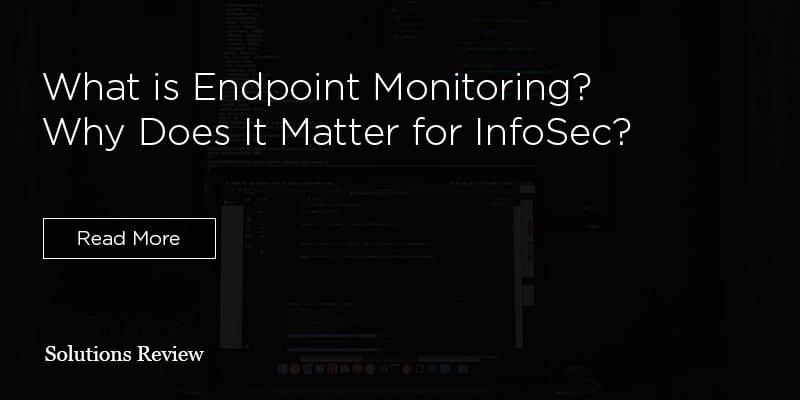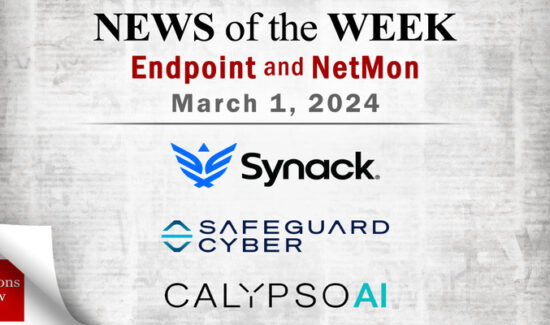Endpoint Monitoring, EDR, and Endpoint Security: What Do You Need?


Enterprises often believe they have a complete understanding of modern endpoint security. After all, so their reasoning goes, cybersecurity began with endpoint security. Most users recognize it already from years of familiarity. At its core, they believe, endpoint security keeps digital invaders like malware and ransomware out.
Certainly, this is true. However, it only scratches the surface of endpoint security’s true capabilities.
Typically, enterprise decision-makers think of antivirus capabilities when they refer to endpoint security. Yet endpoint security doesn’t begin and end with next-gen antivirus. While next-generation antivirus constitutes a significant part of the modern digital perimeter, by itself it cannot offer enough digital protection.
Your enterprise needs to consider incorporating endpoint monitoring and EDR into your digital perimeter. What is EDR? How does it work within the larger endpoint security solution? For that matter, how does endpoint management differ from EDR?
We answer these questions and more below.
The Heart and Soul of Endpoint Security
Of course, endpoint protection platforms consists of several key cybersecurity capabilities. These include:
- Next-Generation Antivirus.
- Sandboxing.
- Firewalls.
- Honeypots.
- Data Loss Prevention.
- Port Control.
- Application Control.
While these capabilities contribute to your enterprise’s cybersecurity posture significantly, you must also embrace the philosophical aspects of security. Without the right line of thinking, you won’t possess the foundation to supplement your cybersecurity. Indeed, true endpoint security combines the technological and human simultaneously.
In this case, two particular endpoint security mantras should guide your thinking:
- Every cyberattack attack begins at the endpoint.
- Your cybersecurity must emphasize visibility into all of your endpoints.
Both of these points relate to endpoint monitoring and EDR. Here’s how.
Why Endpoint Monitoring and EDR?
Cybersecurity experts and decision-makers continue to struggle with the truth of digital perimeters in modern times. Unfortunately, no preventative InfoSec capability can defend against 100% of all malware attacks. Eventually, something will penetrate your network’s perimeter.
Myriad reasons explain why. Hackers continue to refine and evolve their digital threats (hence the development of fileless malware). The enterprise perimeter continues to become porous as businesses undergo cloud adoption and digital transformation.
Additionally, the increase of mobile devices and IoT devices can create unmonitored dark areas in your IT environment. From these concealed areas, hackers can perform island hopping attacks, conduct lateral movements, or plant dwelling threats.
Of course, you shouldn’t consider your digital perimeter irrelevant because of this. Even if you can’t prevent 100% of cyber attacks, you can get pretty close. So long as you continually patch and upgrade your digital perimeter, you can deflect most attacks and dissuade most malicious actors.
What Endpoint Monitoring?
Every endpoint connecting to your IT environment serves as a gateway, both for your legitimate users and threat actors.
Usually, enterprises recognize this, at least subconsciously. However, they tend to neglect to take next philosophical step from this epiphany; namely, every enterprise endpoint requires the same level of protection.
Of course, this means mandating every endpoint connecting to your network maintains a consistent level of endpoint security. Often maintaining that consistency proves easier said than done.
For example, say you have a strong bring-your-own-device (BYOD) culture. Your IT security team must require each user to register their devices and install your endpoint security before granting access. With the proliferation of mobile devices, you should make this policy a priority.
For endpoint monitoring, protecting each endpoint also requires recognizing each device as its own identity. Yes, you should consider each device separate from the user who typically uses it (as bizarre as that may sound).
Thus, endpoint monitoring allows your security team to monitor, collect, and analyze your endpoint behaviors. It establishes baselines behaviors to evaluate whether it ever acts abnormally and can alert your security team promptly to investigate.
A strong digital perimeter requires strong preventative components. This can mean antivirus and firewalls. However, it also means recognizing possible endpoint penetration as soon as it happens to halt malicious activities in its earliest stages. Therefore, you need to consider deploying endpoint monitoring in your enterprise network.
What is EDR?
You can consider endpoint detection and response (EDR) a branch of endpoint monitoring. However, they aren’t quite the same. Endpoint monitoring adds another preventative layer to your digital perimeter. EDR supplements the digital perimeter by catching cyber attacks which do penetrate the IT environment.
EDR allows your IT security team to collect, record, and store endpoint activity. In turn, they can use this data to detect attacks and dwelling threats. In some ways, EDR resembles the endpoint security equivalent of SIEM solutions. It even provides a centralized incident response interface for easy alert investigation and supplements it with threat detection and contextualization.
Moreover, EDR does work with your endpoint monitoring to block attacks in the pre-execution stage. Yet it works best as a failsafe for your digital perimeter.
Final Endpoint Security Thoughts
Do you remember when the digital perimeter consisted of a bunch of desktop towers on your business property? When you could go out and actually count the number of devices which made up your digital presence?
We do too. Unfortunately, those days are long gone.
If you want to stay competitive in the digital marketplace, your business needs to adapt to the cloud, to the presence of IoT devices, and mobile proliferation. Each of these requires taking on a certain amount of digital risk—risks which could spell your business’ end.
Unfortunately, legacy endpoint security solutions just can’t provide the protection you need to manage these risks. It lacks the visibility and threat intelligence necessary to recognize threats in the pre-execution stage or malicious behaviors on the endpoint.
Endpoint monitoring and EDR are two next-generation endpoint security capabilities which help increase visibility into all of your network devices; with them, you can prevent hackers from exploiting the dark areas of your IT environment.
We asked in the title “what do you need?” The question, it turns out, is rhetorical. The answer is that your enterprise needs all of them to stay secure against malware and external threat actors.
If you want to learn more about these next-generation endpoint security capabilities, be sure to check out our 2019 Buyer’s Guide. We list the top vendors in the field, their key capabilities, and our Bottom Line for each!
























